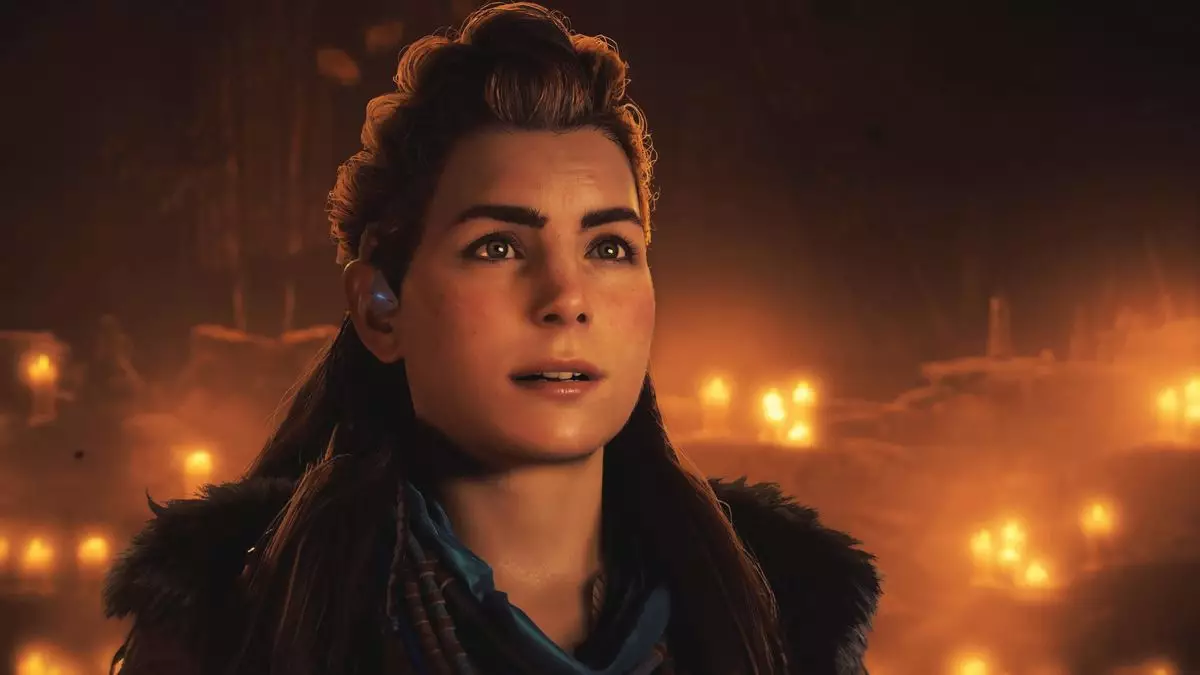In the evolving world of video games, remasters have become a recurring theme, often leaving players questioning their value. When news broke about the remastered version of “Horizon Zero Dawn,” I found myself entrenched in skepticism. The original title, launched in 2017, stood tall among the best offerings on the PlayStation 4. Yet, with Sony leaning more into remasters rather than pursuing fresh content for the PlayStation 5, I couldn’t help but wonder: did Aloy truly need a visual overhaul? After diving deeper into the remaster, my stance has softened, revealing nuances that warrant attention.
My initial reluctance was rooted in the belief that successful games like “Horizon Zero Dawn” shouldn’t be revisited while they still shine brightly on current consoles. After all, if the narrative of primitive tribes navigating a robotic dystopia didn’t captivate players initially, would a remaster’s sheen change minds? There’s an undeniable frustration among fans when it comes to pricing strategies; Sony has raised the price of the base game alongside introducing an upgrade pathway, essentially making it cumbersome for newcomers to jump in. This pricing strategy not only dilutes the value proposition but also raises ethical concerns about how companies handle consumer trust in the gaming community.
For players invested in the original title, however, the $10 upgrade fee presents a compelling argument for going back to Aloy’s world. The introduction of enhancements derived from the acclaimed “Frozen Wilds” expansion positions the remaster as more than just a cash grab. With improvements that align the original with the stunning visuals of “Horizon Forbidden West,” hardcore fans may find the investment justified, especially if they’ve yet to uncover the full breadth of content the original game offered.
Immersing myself in “Horizon Zero Dawn Remastered,” I was struck by how much the visuals have evolved. While I usually don’t fixate on visual fidelity—prioritizing gameplay and style over photorealism—I found myself pleasantly surprised by the remaster’s sophisticated improvements. It’s essential to recognize that visual upgrades don’t merely imbue a game with lustrous graphics; they breathe fresh life into an experience that many have cherished since its debut.
As I traversed the landscapes, the transformations were evident: smoother animations, enhanced lighting, and refined environmental interactions. Snowflakes reacted convincingly to Aloy’s footsteps, and the flora responded dynamically, making the world feel alive and vibrant. These enhancements, courtesy of Nixxes, were far from subtle; they resulted in a game that felt current-gen while retaining its original charm.
However, not all changes hit the mark perfectly. A few hiccups during cutscenes, like awkward mocap moments and minor clipping around character clothing, hinted at the challenges faced by developers in cohesively enhancing a game conceived for a different generation. Nonetheless, these critiques did little to overshadow the overall beauty and craftsmanship poured into the remaster.
After investing numerous hours into the remaster, I found myself grappling with the overarching question: is this remaster truly necessary? For individuals who have completed the original or are immune to nostalgia, the answer may skew negative. However, for players rediscovering their love for Aloy or those who’ve yet to dive in, the remaster represents an opportunity to experience a genre-defining title with enhanced gameplay mechanics and breathtaking visuals.
While I might still argue that it doesn’t offer enough incentive for returning players to navigate the inflated price of the base game, the $10 upgrade encapsulates a worthwhile investment for seasoned fans eager to experience their beloved game anew. The remaster is neither a superficial touch-up nor a mere performance enhancement; it’s a comprehensive reimagining that redefines what a remaster should entail.
In an industry where the beauty of a title can sometimes be marred by hurried remasters, “Horizon Zero Dawn Remastered” distinguishes itself through careful design and attention to detail. While my initial skepticism was based on an overarching concern about remastering culture, I have come to appreciate the thoughtfulness behind this specific upgrade. Though it may not be a must-purchase for everyone, the entry price is undeniably justified for fans desiring a fuller, richer experience of Aloy’s epic journey. As video games continue to evolve, remasters like this highlight a key aspect: respect for both the original work and the players who cherish them.


Leave a Reply